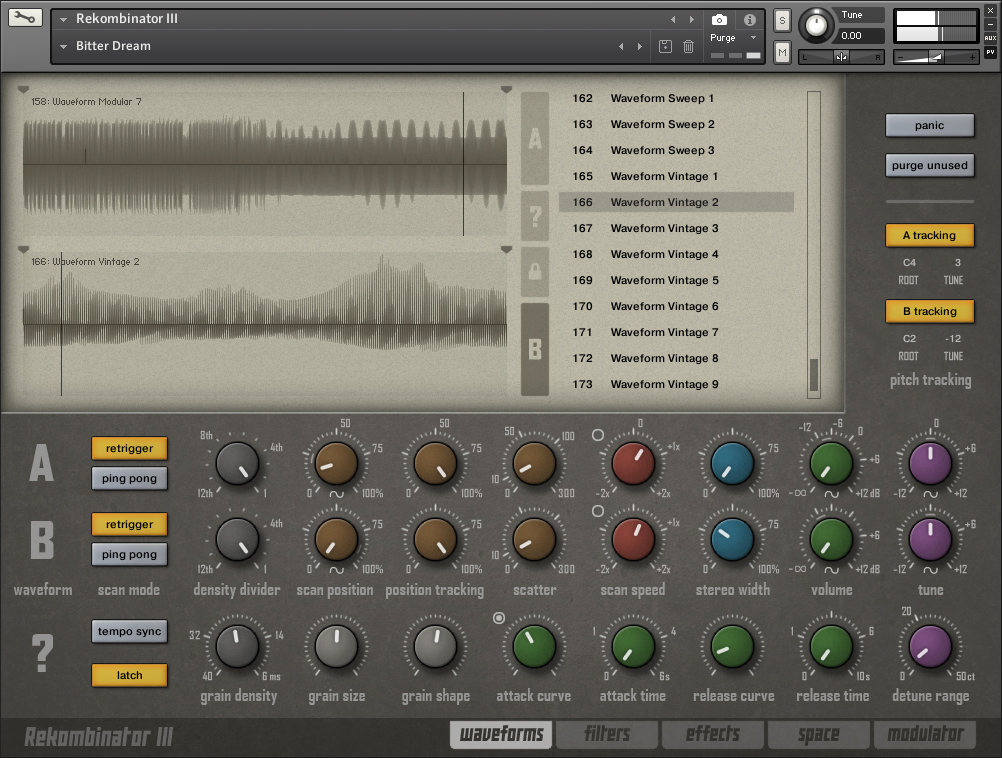Support for sample drag and drop. Rekombinator II had a bad release timing, NI released Straylight (which has very similar concept) just when I have been finishing the manual and then introduced sample drag and drop loading to Kontakt. Rekombinator II had somewhat compromised functionality, because I struggled to make it user manageable to edit and expand sample pool. Now when you can just drag a sample into UI it made no sense, so I had to rebuild internal design. Anyway in Rekombinator III you can just drop the sample into UI to load it. The instrument will attempt to detect pitch and volume level and adjust sample settings automatically. Additionally the same functionality applies to convolution reverbs, now you can just drop your IR files into the UI.
Effects section is completely new. Rekombinator II only had chorus and phaser hard coded into specific point in signal chain. Now there's a kind of effect rack. There are four effect containers, you can select which effect to load into each of them, and where to put it in signal chain. Whether to process only one sample, both or put it as insert after send point or in master bus after send return point. It supports effects that has been added to Kontakt after Rekombinator II release: Choral, Phasis, Flair, Replika delay and new algorithmic reverbs. Also there is brand new preset system for all the effects, with a browser and ability to save your own presets.
Modulator has now new shape design mode, based on idea similar to vector graphics. You can set up LFO waveform by moving/adding/deleting nodes in XY pad area.
Finally the modulator can now be attached to (almost) any controller in the instrument including the effect rack. Also controllers have visual live feedback of modulation. This part, combined with editable effect rack, was particularly challenging and it made me almost gave up on the whole thing multiple times.
You can watch instrument quick walkthrough here:
The instrument requires full version of Kontakt 6.6.1, the last version which supports Windows 7.
ps. I gave up on Facebook, my apologies if you tried to contact me there and I did not respond. I just can't stand it.



